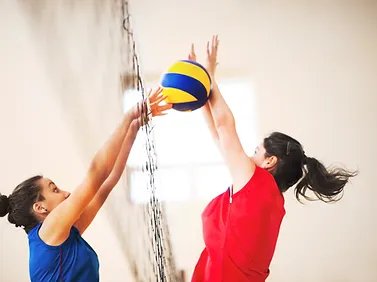Shoulder Labral
Tears & Disorders
Injury Guide

Shoulder labral tears are a common injury among athletes, particularly those involved in sports that require repetitive overhead motions or involve contact. This injury affects the labrum, which is a ring of soft tissue that surrounds the socket of the shoulder joint. Labral tears can cause significant pain and impact an athlete’s performance, making proper rehabilitation crucial for a successful return to their sport.
Symptoms:
One of the primary symptoms of a shoulder labral tear is persistent shoulder pain. Athletes may experience a deep, dull ache, sharp pain, or a catching sensation when moving their shoulder. They might also notice a decrease in shoulder strength and stability, making it challenging to perform certain activities or sports-specific movements. Additionally, athletes may experience limited range of motion, joint stiffness, and a feeling of instability in the shoulder.
Anatomy:
The labrum is a ring of fibrous cartilage that surrounds the glenoid, which is the shallow socket of the shoulder joint. It serves to deepen the socket and provides stability to the joint, allowing for smooth movement of the upper arm bone (humerus) within the shoulder socket.
Shoulder labral tears can occur in different locations and have varying degrees of severity. The tear can be classified as either a SLAP tear (Superior Labrum Anterior to Posterior) or a Bankart tear, depending on the specific location and extent of the injury.
A SLAP tear affects the upper portion of the labrum and is commonly seen in overhead athletes. This type of tear can result from repetitive throwing motions, such as those performed in baseball or volleyball, or from a sudden traumatic event that causes the biceps tendon to pull on the labrum.
A Bankart tear, on the other hand, involves a tear in the lower portion of the labrum and often occurs due to a shoulder dislocation or subluxation (partial dislocation). Athletes who participate in contact sports or engage in activities with a risk of falling, such as rugby or snowboarding, are more prone to this type of tear.
The implications of shoulder labral tears are significant for athletes. The torn labrum compromises the stability and function of the shoulder joint, leading to pain, weakness, and a decreased ability to perform sports-specific movements. The labrum helps keep the humerus centered within the socket during arm movements, so when it is torn, there is a heightened risk of shoulder instability and dislocation.
Moreover, athletes with labral tears may experience difficulties in generating power, accuracy, and control during throwing or overhead motions. The tear can limit the range of motion in the shoulder joint and cause clicking or catching sensations, affecting the fluidity and efficiency of athletic movements.
Causes:
Several factors can contribute to the development of shoulder labral tears. Overuse or repetitive overhead motions, such as throwing a ball or serving in tennis, can gradually wear down the labrum, making it more susceptible to tears. Direct trauma to the shoulder, such as a fall or a sudden impact, can also cause labral tears. Athletes who participate in contact sports like football or rugby are at a higher risk for this type of injury.
Rehab Strategies:
Physical therapy offers a comprehensive approach to address pain relief, restore range of motion, improve strength, and enhance shoulder stability. Initially, the focus is on reducing pain and inflammation through modalities such as ice, heat, ultrasound, or electrical stimulation. Therapeutic exercises, including gentle stretching and range of motion exercises, help restore shoulder mobility gradually.
As the athlete progresses, strengthening exercises become a central component of the rehabilitation program. These exercises target the muscles around the shoulder joint, including the rotator cuff and scapular stabilizers, to enhance stability and support. Resistance bands, dumbbells, and bodyweight exercises are commonly used to improve strength and control in the shoulder region.
In addition to exercise, manual therapy techniques can be beneficial for athletes with shoulder labral tears. Manual therapy involves hands-on techniques performed by a skilled physical therapist to mobilize and manipulate the shoulder joint and surrounding tissues. These techniques aim to reduce pain, improve joint mobility, and enhance tissue healing.
Another essential aspect of shoulder labral tear rehabilitation is sport-specific training. Athletes need to regain their functional abilities and specific movement patterns required for their sport. Physical therapists design tailored exercise programs that replicate the demands of the athlete’s sport, gradually reintroducing throwing, swinging, or other sport-specific activities.
Education and injury prevention strategies are crucial for athletes aiming to prevent future shoulder labral tears. Physical therapists provide guidance on proper biomechanics, body positioning, and techniques to reduce stress on the shoulder joint during athletic activities. They may also suggest modifications to training routines and equipment, along with exercises to strengthen supporting muscles and improve overall shoulder stability.
In conclusion, shoulder labral tears can be a significant setback for athletes, impacting their performance and quality of life. However, with a comprehensive rehabilitation program provided by an experienced physical therapist, athletes can regain strength, restore range of motion, and achieve a successful return to their sport.
Let’s
Work
Together
Ready to get started? Click here. General questions? Read our FAQ page. Have a specific question? Leave us a message!
